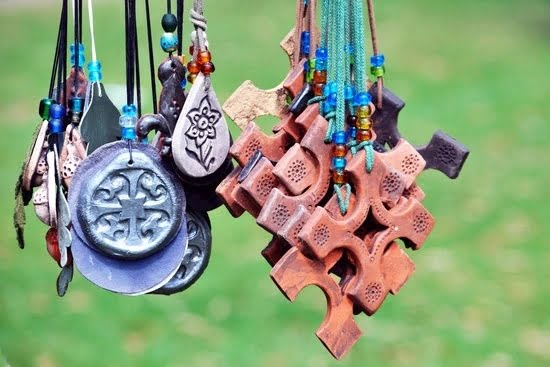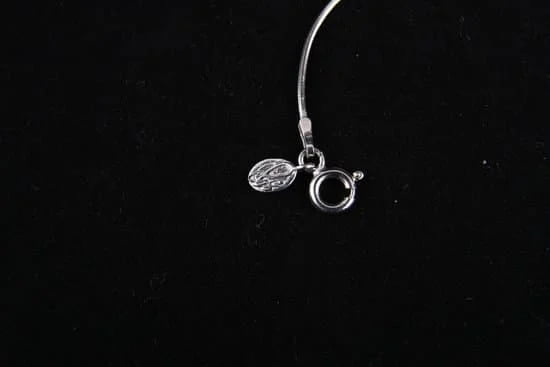The oversaturated market of diamond jewelry has made it increasingly challenging to sell these prized gemstones. Despite being a booming industry, the demand for diamond jewelry is dwindling due to shifting consumer preferences, high pricing predicaments, online competition, lack of trust and transparency in the industry, the rise of lab-grown diamonds, and changing social values.
In this article, we will delve into these various factors that contribute to the difficulties faced by retailers and individuals looking to sell diamond jewelry in today’s market.
The diamond jewelry industry has experienced significant growth over the years. With lavish advertising campaigns and societal pressure regarding engagement rings and luxury accessories, diamonds have become a symbol of prestige and status. However, this popularity has led to an oversaturated market filled with countless options for consumers to choose from. As a result, selling diamond jewelry has become more challenging as retailers face stiff competition from other brick-and-mortar stores as well as online retailers.
Additionally, consumer preferences towards gemstones have shifted away from traditional diamonds. Many individuals are now opting for alternative gemstones that offer unique colors and characteristics or even lab-grown diamonds that provide a more affordable option without compromising quality. Ethical and sustainable jewelry options are also gaining traction among socially-conscious consumers. This change in taste further contributes to the difficulty in selling diamond jewelry.
The Dwindling Demand
Consumer preferences in the jewelry industry are constantly evolving, and this has had a significant impact on the demand for diamond jewelry. In recent years, there has been a noticeable shift in consumer taste towards alternative gemstones and ethical and sustainable jewelry options. As a result, selling diamond jewelry has become increasingly challenging for retailers.
One factor contributing to the dwindling demand for diamond jewelry is the changing taste of consumers. Many individuals are now seeking out unique and unconventional gemstones as a way to express their personal style. Gemstones such as sapphires, emeralds, and rubies are gaining popularity due to their vibrant colors and rarity. Additionally, semi-precious stones like amethysts and garnets offer an affordable alternative to diamonds while still providing a glamorous touch.
Another driving force behind the decline in demand for diamond jewelry is the rising interest in ethical and sustainable options. Consumers today are more conscious about where their products come from and how they are sourced. The diamond industry has faced numerous scandals and controversies related to unethical mining practices and human rights abuses. This has led many consumers to seek out alternatives that align with their values, such as lab-grown diamonds or vintage pieces.
| Category | Percentage of Jewelry Buyers |
|---|---|
| Diamond Jewelry | 45% |
| Semi-Precious Stone Jewelry | 30% |
| Ethical/Sustainable Jewelry | 25% |
As seen from the data, diamond jewelry still retains a significant portion of the market at 45%. However, the growing preference for alternative gemstones and ethical jewelry cannot be ignored. It is crucial for retailers to adapt to these changing consumer preferences in order to effectively sell diamond jewelry in the modern market.
Pricing Predicament
The Expensive Nature of Diamond Jewelry
Diamond jewelry has long been associated with luxury and sophistication, primarily due to its high price range. The diamonds used in jewelry are incredibly rare and require extensive mining and manufacturing processes, resulting in a significant cost for consumers. This high price tag poses a challenge for sellers, as it limits the number of potential buyers who can afford such luxury items.
The Challenges of Resale Value
One major predicament faced by sellers of diamond jewelry is the limited resale value of these pieces. Unlike many other luxury goods that hold their value or even appreciate over time, diamond jewelry tends to have low resale values. This is because the market for pre-owned diamond jewelry is smaller and oversaturated, making it difficult for sellers to find interested buyers willing to pay a reasonable price.
Overcoming the Pricing Predicament
To overcome the pricing predicament when selling diamond jewelry, sellers need to explore alternative strategies. One approach is to offer customization options that allow customers to create unique pieces within their budgets. By allowing customers to have more control over the design and cost of their diamond jewelry, retailers can attract a wider range of buyers.
Another effective strategy is offering financing options or layaway plans. These options make diamond jewelry more affordable by spreading out the cost over time. By providing flexible payment solutions, sellers can target customers who desire diamond jewelry but may not have the means to purchase upfront.
Additionally, educating potential buyers about the long-term investment value of certain types of diamond jewelry can help alleviate concerns about limited resale value. Promoting the rarity and quality of specific diamonds can give potential buyers confidence in their investment and increase demand.
By addressing the challenges posed by high costs and limited resale value, sellers can navigate the pricing predicament associated with selling diamond jewelry and still achieve success in this competitive marketplace.
The Impact of Online Competition
With the rise of online retailers, the diamond jewelry market has experienced a significant shift in the way consumers make their purchases. Brick-and-mortar stores that once dominated the industry are now facing intense competition from e-commerce platforms. This change can be attributed to various factors, including convenience, affordability, and an enhanced shopping experience offered by online retailers.
Convenience is one of the key advantages that online retailers have over traditional brick-and-mortar stores. Consumers can browse through a wide range of diamond jewelry options from the comfort of their own homes, saving them time and effort compared to physically visiting multiple stores. Additionally, online platforms provide customers with detailed product descriptions, high-resolution images, and customer reviews, enabling them to make well-informed purchase decisions.
Another appeal of purchasing diamond jewelry online is its affordability. Online retailers often have lower operating costs compared to physical stores, allowing them to offer competitive prices to consumers. Moreover, these platforms frequently offer exclusive discounts and promotions that attract price-conscious shoppers. As a result, customers may feel more inclined to buy diamond jewelry online due to the potential cost savings they can enjoy.
The overall shopping experience provided by online retailers also contributes to their success in the diamond jewelry market. Many platforms offer personalized recommendations based on customers’ browsing history and preferences, creating a tailored shopping journey for each individual. In addition, easy-to-use filters and search functions allow consumers to quickly find exactly what they are looking for without having to navigate through crowded store displays.
However, it is important to note that while e-commerce poses challenges for traditional retailers, it also presents opportunities for those who adapt their strategies effectively. Physical stores can leverage their unique advantage of offering an immersive and tactile experience when selling diamond jewelry.
By creating interactive display areas or hosting events where customers can try on different pieces or receive professional advice on selection and care, brick-and-mortar stores can enhance their value proposition and differentiate themselves from online competitors.
Trust and Transparency
The diamond jewelry industry has been plagued by numerous scandals and controversies surrounding diamond sourcing, leading to a crisis of trustworthiness among consumers. These issues have had a significant impact on the selling of diamond jewelry, as buyers now demand greater transparency and ethical standards when purchasing these precious stones.
One of the major scandals that shook the industry was the issue of conflict diamonds, also known as blood diamonds, which are mined in war zones and used to fund armed conflict against governments. This revelation led to a public outcry and an increased awareness about the negative social and environmental impacts associated with diamond mining. As a result, consumers have become more cautious when buying diamonds, seeking assurances that the gems they purchase are ethically sourced.
Furthermore, concerns about human rights violations and unfair labor practices within the diamond supply chain have also contributed to this trustworthiness crisis. Consumers now want to ensure that the workers involved in mining, cutting, and polishing diamonds are treated fairly and receive fair wages. Failure to meet these ethical expectations can harm a brand’s reputation and hinder efforts to sell diamond jewelry.
To regain consumer trust and navigate through this crisis, jewelers need to prioritize transparency in their supply chains. They should provide detailed information about where their diamonds come from, ensuring they are conflict-free, responsibly sourced, and adhere to strict ethical guidelines. Certification schemes such as the Kimberley Process Certification Scheme can help verify responsible sourcing practices and offer reassurance to buyers.
Additionally, comprehensive traceability systems that track a diamond’s journey from mine to market can be implemented. These systems can include technologies like blockchain, which provides an immutable record of every transaction made along the supply chain. Such transparency measures not only ensure accountability but also demonstrate commitment towards sustainability practices.
Overall, addressing the trustworthiness crisis in the diamond jewelry industry is crucial for sellers looking to succeed in today’s market. By prioritizing transparency and ethical sourcing, jewelers can regain consumer confidence and build long-lasting relationships with buyers who prioritize sustainable and responsible purchasing decisions.
| Challenges | Solutions |
|---|---|
| Lack of transparency in the diamond supply chain | Prioritize transparency in the supply chain by providing detailed information about the origin of diamonds and adhering to certification schemes such as the Kimberley Process Certification Scheme |
| Concerns about human rights violations within the diamond industry | Ensure fair labor practices and treat workers involved in mining, cutting, and polishing diamonds fairly, while offering reassurance through certification mechanisms |
| Rebuilding consumer trust | Implement comprehensive traceability systems using technologies like blockchain to track a diamond’s journey from mine to market, thereby ensuring accountability and demonstrating commitment towards sustainability practices. |
The Rise of Lab-Grown Diamonds
Lab-grown diamonds have been steadily gaining popularity in recent years, posing a significant challenge to the traditional diamond jewelry industry. These diamonds are produced in a lab using technology that replicates the natural process of diamond formation, resulting in stones that are visually and chemically identical to their mined counterparts. The appeal of lab-grown diamonds lies in their competitive pricing and environmentally friendly production process.
One of the main reasons why lab-grown diamonds have become a threat to the traditional market is their pricing. Lab-grown diamonds can be up to 30% cheaper than mined diamonds of similar quality. This lower price point makes them more accessible to a wider range of consumers, especially millennials who prioritize affordability without compromising on aesthetics or quality. As a result, many consumers are opting for lab-grown diamonds as an alternative to traditionally mined ones.
Furthermore, lab-grown diamonds also appeal to the growing market for sustainable and eco-friendly products. The diamond mining industry has long been associated with environmental destruction and ethical concerns, such as unfair labor practices and funding conflicts. In contrast, lab-created diamonds have a minimal carbon footprint and do not contribute to these issues. Consumers who prioritize sustainability are increasingly gravitating towards lab-grown diamonds as a conscious choice.
While some may view the rise of lab-grown diamonds as a threat to the traditional diamond jewelry industry, it also presents an opportunity for forward-thinking retailers. By embracing this new trend and offering both mined and lab-grown options, jewelers can cater to a broader customer base and meet changing consumer preferences. It allows them to position themselves as more inclusive and socially responsible businesses.
Changing Social Values
In recent years, there has been a significant shift in social values and preferences when it comes to jewelry. Traditional diamond jewelry, with its emphasis on luxury and extravagance, is facing new challenges in an era where minimalism and non-traditional trends are gaining popularity.
One major trend that has emerged is the rise of minimalism. Many consumers are now opting for simpler and more understated pieces, favoring clean lines and delicate designs over the boldness of traditional diamond jewelry. This move towards minimalism can be attributed to changing lifestyles and a desire for more practical, versatile pieces that can be worn on a daily basis. As a result, traditional diamond jewelry often struggles to resonate with these consumers who prefer subtler options.
Non-traditional trends are also making waves in the jewelry industry. With the growth of individuality and personal expression, consumers are seeking unique pieces that reflect their own style and personality. This has led to an increased demand for alternative gemstones, such as colored gemstones or birthstones, as well as unconventional materials like wood or ceramic. These non-traditional options offer consumers a chance to stand out from the crowd and showcase their individuality through their jewelry choices.
In response to these changing social values, retailers in the diamond jewelry industry need to adapt their strategies to cater to this evolving market. One approach is to embrace minimalism by offering a range of simpler designs that align with current trends.
Retailers can also incorporate non-traditional elements into their diamond jewelry collections, such as incorporating different colored diamonds or unconventional settings. By considering these changing preferences and adjusting their offerings accordingly, retailers can position themselves as forward-thinking and in tune with the desires of today’s consumers.
Overall, the rise of minimalism and non-traditional trends poses both challenges and opportunities for selling diamond jewelry. It is crucial for retailers in this industry to stay aware of these changing social values and adjust their strategies accordingly. By doing so, they can navigate the challenges and continue to thrive in the evolving landscape of the diamond jewelry market.
Strategies for Selling Diamond Jewelry in the Modern Market
Selling diamond jewelry in the modern market can be a challenging task, given the oversaturated industry and changing consumer preferences. However, with the right strategies, retailers can adapt and succeed in this competitive landscape. Here are some tips for selling diamond jewelry in the modern market:
- Build a strong brand: In a crowded market, having a unique and recognizable brand is essential. Develop a brand identity that appeals to your target audience and sets you apart from competitors. This can include factors like quality craftsmanship, personalized customer service, or a focus on ethical sourcing.
- Targeted marketing: Instead of trying to reach a broad audience, focus your marketing efforts on specific demographics that are more likely to purchase diamond jewelry. Utilize social media platforms like Instagram and Facebook to target ads to specific age groups or locations. Collaborate with influencers who have followers interested in luxury goods or jewelry.
- Embrace online platforms: The rise of online retail has revolutionized the way consumers shop for diamond jewelry. Establish an online presence through e-commerce websites or your own website. Optimize your website for search engines so that potential customers can easily find you when searching for diamond jewelry.
- Enhance the customer experience: Provide exceptional customer service both in-store and online to build trust and loyalty with your customers. Offer personalized consultations and assistance during the buying process either through chatbots or knowledgeable staff members.
- Educate customers about diamonds: Many consumers may not fully understand the value and characteristics of diamonds. Provide educational content on your website or through social media platforms to help customers make informed purchasing decisions.
By implementing these strategies, retailers can navigate the challenges of selling diamond jewelry in the modern market effectively. It is essential to adapt to changing consumer preferences, leverage digital platforms, and prioritize customer satisfaction for success in this evolving industry.
Conclusion
In conclusion, the diamond jewelry industry is facing numerous challenges in today’s market. From shifting consumer preferences to the impact of online competition, traditional retailers are finding it increasingly difficult to sell diamond jewelry. Additionally, the lack of trust and transparency in the industry, coupled with changing social values towards minimalism and non-traditional trends, further exacerbates the struggle.
However, these challenges also present opportunities for those willing to adapt. Retailers can navigate the changing landscape by implementing certain strategies. First and foremost, building a strong brand identity and establishing trust with consumers is crucial. Transparent sourcing practices and ethical standards need to be emphasized to regain consumer confidence.
Moreover, targeted marketing can help retailers reach specific segments of customers who still value traditional diamond jewelry. Understanding their needs and preferences will allow retailers to tailor their messaging effectively. Additionally, creating a memorable customer experience through personalized service and expertise can differentiate brick-and-mortar stores from online competitors.
Ultimately, selling diamond jewelry successfully in the modern market requires an understanding of the evolving nature of consumer preferences and buying habits. By staying attuned to these changes and implementing effective strategies, retailers can overcome the challenges ahead and find success in this competitive industry.
Frequently Asked Questions
Are diamonds hard to resell?
Reselling diamonds can be a challenging task, as it is often difficult to find buyers willing to pay the original retail price for a second-hand diamond. Several factors contribute to the difficulty of reselling diamonds. Firstly, the widespread availability and vast supply of diamonds in the market means that potential buyers have numerous options to choose from, making it more challenging to find someone interested in purchasing a specific diamond at its desired value.
Additionally, the perception that diamonds are overpriced and artificially inflated in value affects the willingness of buyers to pay high prices even for high-quality diamonds. Lastly, trends and preferences in jewelry designs can change over time, which may make certain diamond cuts or styles less appealing to potential buyers.
Why do diamonds have such low resale value?
The low resale value of diamonds primarily stems from their inherent lack of rarity and uniqueness compared to other investments or commodities. Unlike scarce resources such as precious metals or rare artworks that hold intrinsic value due to their limited supply, diamonds are considerably more abundant due to advances in mining technology over the years.
Furthermore, once purchased, diamonds typically lose a significant portion of their retail value immediately upon leaving the store, as jewelers often mark up prices substantially on these gemstones for profit margins. Consequently, when individuals attempt to resell their diamonds, they frequently discover that potential buyers are unwilling to pay anywhere near the initial purchase price due to these factors.
Do diamonds resell well?
While finding resale opportunities for diamonds can be challenging, there are instances where diamonds can indeed resell well. High-quality certified diamonds with desirable characteristics such as excellent clarity grades or unique colored stones may have better prospects for resale compared to lower quality or more common gems. Collectors and individuals specifically seeking out rare or unusual diamond cuts or sizes might also be willing to pay a premium price for such exquisite pieces.
Additionally, establishing connections within the diamond industry or working with reputable diamond dealers could enhance the chances of finding interested buyers who understand and appreciate the value of certain types of diamonds. Ultimately, factors such as market demand, the specific characteristics of the diamond, and the buyer’s preferences all contribute to determining whether a diamond resells well.

Welcome to my jewelry blog! My name is Sarah and I am the owner of this blog.
I love making jewelry and sharing my creations with others.
So whether you’re someone who loves wearing jewelry yourself or simply enjoys learning about it, be sure to check out my blog for insightful posts on everything related to this exciting topic!





